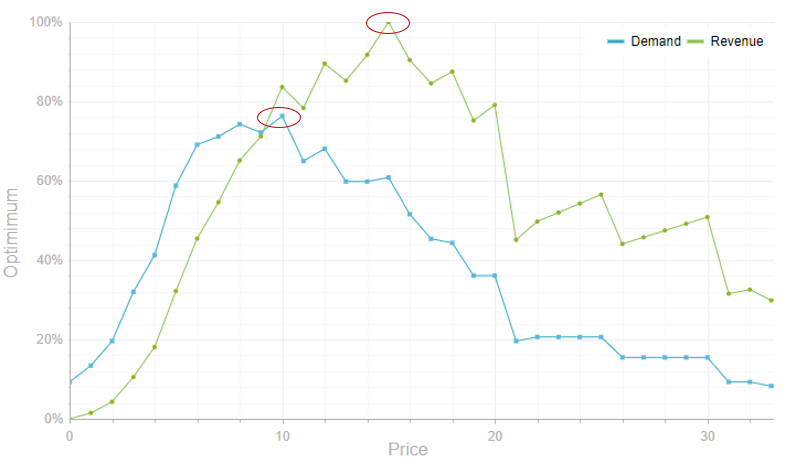Advances in Price Optimization Through Measurement of Willingness-to-Pay
 PriceBeam
·
5 minute read
PriceBeam
·
5 minute read

Price Optimization is Moving from Guesswork to Science-backed Insights
Despite Price being one of the original 4P’s in marketing, many organisations have neglected price insights or simply taken pricing as something near-divine, controlled by the “market”. However, more and more marketers are realising that price and the Willingness-to-Pay (WtP) are not only closely related but also that a scientific approach to price setting can make a substantial difference in profitability as well as market match and brand health. For both existing products but in particular also for when innovating and creating new products or services. If a brand is priced at $20, but consumers are only seeing a value, expressed by willingness-to-pay, of $15, then the brand is over-priced and in an unhealthy state. The opposite also applies of course, that if WtP is $25 then the brand is under-priced and has power to see increases in prices.
A survey among global executives conducted by McKinsey showed that while 84% of all executives found that innovation is important to their growth strategy, and 80% found that existing business models are at risk from new innovations, only 6% were satisfied with innovation performance. This often from a mismatch between the price and value, or lack thereof, consumers see in the new product. At the same time, a 1% improvement in price is worth 11% in profit for the average S&P500 company, making price the most powerful profit driver in the quiver of executives.
With the growing importance of price and the necessary understanding of consumers’ willingness-to-pay, more focus has been given by market researchers to develop new and innovative approaches in studying willingness-to-pay.
Evolution in Willingness-to-Pay Studies
Willingness-to-pay studies have evolved considerably over the last 50 years, with some methods that are still used today originally developed in the 60ies and 70ies. Two are the most prominent methods are the Gabor-Granger method, developed in the 1960s by Clive Granger and André Gabor, and the Price Sensitivity Meter developed in 1976 by Dutch economist Peter van Westendorp. Both methods use a series of psychology-inspired questions that instead of simply asking “what are you willing to pay”, derive at a truer understanding of willingness-to-pay through a series of indirect questions.
While both survey techniques are in use by many pricing practitioners today, each technique have had several improvements suggested to them. This ranges from additional questions to how each question is weighted to determine the true intent by the respondent. At PriceBeam we have had powerful results from applying machine learning to adjust the weights of the van Westendorp questions.
One of the greatest criticisms of Gabor-Granger and van Westendorp focuses on that both methods still ask respondents questions about their price perception and value estimations. This has in the past 20 years lead to a rise in popularity of the more indirect question techniques in choice-based conjoint analysis. In this method, research respondents are shown a series of different options, with varying “attributes” or features. Stating the preferences of different options across 15-25 different sets of choices, consumers indirectly confirm what features they value the most. This in turn can be converted into expressions of willingness-to-pay for sets of features.
Both choice-based conjoint analysis and enhanced versions of e.g. van Westendorp have proven to achieve satisfactory levels of predictiveness in pricing, in particular in consumer goods and around general items with less involvement in the purchase process. Additional reasons for their popularity in willingness-to-pay research is also that all such methods are fairly quick to set up and can be administered online, thus keeping costs low.
With the growing prevalence of e-commerce and digitalisation trends, several neuro-inspired methods have emerged to enhance insights into willingness-to-pay in the past decade, based more on observing behaviours and neurological responses, than by asking the respondents questions. Observation-based methods are of course not new in neuromarketing, but digitalisation has contributed to that such methods can be deployed quicker and cheaper online, than through traditional in-lab techniques. Two such methods are click-stream data mining and eye-tracking. The latter in particular in combination with some of the classic survey techniques mentioned above.
Data mining click stream patterns, when it comes to pricing and willingness-to-pay market research, are using the click patterns that users display when browsing e-commerce websites. When the website visitor was shown a certain price, did she put it in the shopping basket? Or not? When shown different types of psychological price points, or promotions, did she then put the item in the basket. In its simplest form, such behaviours can be used in a similar way to choice-based conjoint analysis to determine appreciation, or lack thereof, of various features, benefits and price points. The advantage is also that on high-traffic websites such click streams can very quickly generate adequate data sets to deliver predictive value.
While eye-tracking techniques have been around for a while, the inclusion of webcams in nearly all modern laptops and a whole range of available add-on webcams for desktop PCs means that online market research can also use eye-tracking techniques. While the average webcam may not have the same resolution as a high-spec lab eye-tracking camera, when shown a virtual shelf on a computer screen, webcam-based eye tracking is more than precise enough to determine how the research participant’s eyes wander over the shelf, and what items attract attention or are dismissed by the eyes. The possibly usage online with the respondent’s own webcam makes this a very cost-effective approach.
PriceBeam has developed new willingness-to-pay methods that combine several of the techniques above into a more accurate WtP measurement, while still keeping the attractiveness of both speed and costs from online administration. The combination of the different methods into the same online study delivers superior results and eliminates some of the systematic errors know from the original techniques developed in the 70ies.
Applications and uses
Willingness-to-pay studies are used to set better and more market-aligned prices across both B2C and B2B. Marketers using these research types achieve higher prices and healthier brands, with less discrepancy between the customers’ willingness-to-pay and the actual price. One key use is for when setting prices for new products or existing products in new markets. The insights from willingness-to-pay studies help marketers set strong prices that match the overall value as seen by the potential customers. Without WtP research, marketers often fall back to guesswork or simple cost-plus: if we can produce at $20, then a price of $40 is probably OK. But WtP research could show that consumers would be willing to pay $60. New prices for new products is where this kind of research really excels, as there is often no baseline price.
However, willingness-to-pay insights can also help marketers optimise prices for existing products in existing markets. PriceBeam studies have shown that e.g. particular start-ups and scale-ups tend to under-price their products or services with approximately 30% versus what the customers really are willing to pay. This is likely to come from such companies’ cautionary approach to the market place, with a desire to take market share through low pricing, but with a WtP study in their hand they could make 30% more revenue without losing overall business. More mature companies and markets can also benefit from willingness-to-pay insights when it comes to re-positioning, price increases and competitive reactions. If my customers are willing to pay a higher price, then the next price increase should exploit that.
Knowledge gathered from the combination of self-reported answers, behavioural measures and bio-physical observations can lead to development of more accurate models for consumers’ willingness-to-pay, and in return benefit marketers when setting prices for both existing products and new products or services. Innovation-intensive companies with a steady pipeline of new innovations stand to gain the most, when being better at matching value-delivered to consumers’ expectations.
.png?width=400&height=100&name=PBLogoTransparent%20(1).png)



